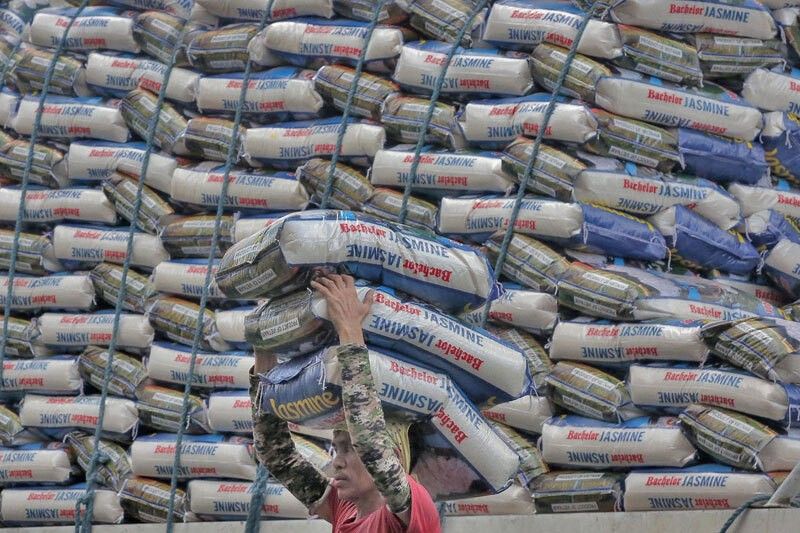Inflation halts 4-month decline

Likely picked up to 3% in February
MANILA, Philippines — Headline inflation may have picked up for the first time in four months in February, mainly driven by higher rice prices and electricity rates, according to a poll of top economists.
Aris Dacanay, economist for ASEAN at HSBC, said inflation likely went up to three percent in February from an over three-year low of 2.8 percent in January.
Sarah Tan of Moody’s Analytics also believes inflation accelerated to three percent last month, driven by higher prices of rice, meat and fuel.
For Ruben Carlo Asuncion, chief economist at Union Bank of the Philippines, inflation may have climbed to 3.1 percent in February and average 4.1 percent this year, before easing to 3.8 percent in 2025.
If realized, this will be the first time that inflation quickened since it began easing in September 2023. However, this will also be the third month the consumer price index (CPI) landed within the two to four percent target set by the Bangko Sentral ng Pilipinas (BSP).
Dacanay said unfavorable base effects would be the biggest drivers of acceleration in February.
“Without any sudden change in policy or external conditions, these unfavorable base effects will likely remain in place until July of this year and can potentially push inflation to breach the central bank’s two to four percent target band some time in the second quarter,” he said.
Elevated prices of rice and electricity rates also fanned inflationary pressures during the month, Dacanay said.
“Global rice prices slightly eased by the end of February, but its impact on domestic prices will likely take some time before taking effect,” he said.
Dacanay warned that the proposed P100 across-the-board legislated daily wage hike would pose an upside risk to inflation and may delay the central bank’s easing cycle if passed into law.
Tan of Moody’s Analytics said that if February’s inflation print settles within the central bank’s target range of two to four percent, “this will give the BSP confidence to keep its policy rate steady when they next meet on April 4.”
But there will likely be volatility in the coming months due to the impact of El Niño, which could keep food prices elevated.
“That should mean inflation bumps around the upper end of the BSP’s target range, and could even exceed slightly, before returning firmly to target in mid-2024. We expect full-year inflation to average 3.5 percent,” she said.
Asuncion, meanwhile, said as fading base effects meet the impact of the drought in the second quarter, “headline inflation is expected to peak in the range of five percent year-on-year in June-July before tapering off to a low of 3.5 percent in September.”
Food inflation may also breach the six percent level starting April amid the drought’s impact on food supply, before it slows down in August as El Niño effects wear off, he said. Food inflation may average 4.7 percent this year, slower than the 7.9 percent in 2023.
For Chinabank Research, inflation is expected to rise to 3.3 percent in February, falling around the midpoint of the central bank’s 2.8 to 3.6 percent forecast amid upside pressures from food and electricity rates.
“These upward pressures likely offset price reversals in vegetables, fruits and sugar. Meanwhile, core inflation eased further to 3.4 percent for the month,” it said.
“Looking ahead, we anticipate inflation will breach the BSP’s two to four percent target again from April to July due to base effects. However, average headline inflation will likely settle within target this year. Our full-year inflation projection is 3.8 percent for 2024,” it added.
Meanwhile, Alvin Arogo, economist at Philippine National Bank, forecasts inflation to hold steady at 2.8 percent in February.
He said the BSP would likely observe the risks of a temporary inflation re-acceleration rather than the February data.
“Our baseline estimates assume that amid the wearing-off of base effects, there will be a transitory spike in prices because of the threats from El Niño, possible Middle East conflict escalation, and lagged impact of minimum wage hikes,” he said.
Still, these price pressures will not be as severe compared to the supply shocks over the past two years. Thus, inflation will settle sustainably within the target starting in the fourth quarter, hitting an average of four percent in 2024.
On the other hand, UK-based Pantheon Macroeconomics economist Miguel Chanco said inflation may have eased to 2.7 percent last month due to a softer inflation print for housing and utilities.
“I reckon the February print will lead to a further softening of the BSP’s rhetoric and position at its next meeting in April. Our base case at the moment is that the Monetary Board will start normalizing (cutting) rates in May, by 25 basis points, with 2024 likely to see a total of 100-basis-point in reductions,” he said.
- Latest
- Trending






















